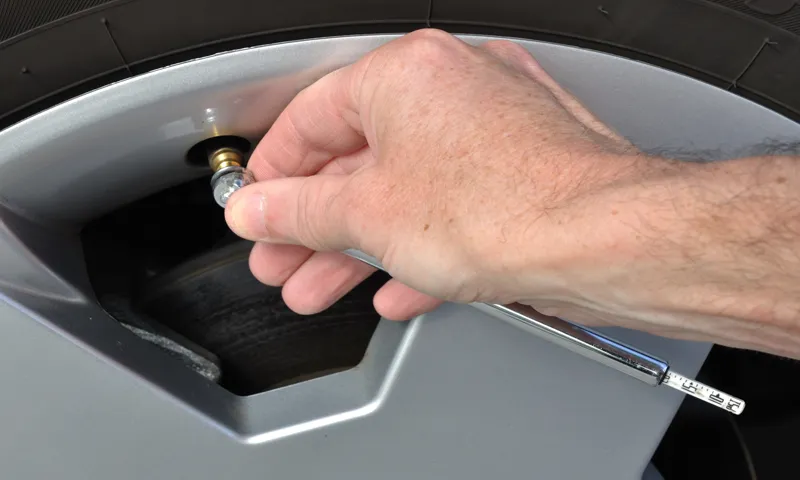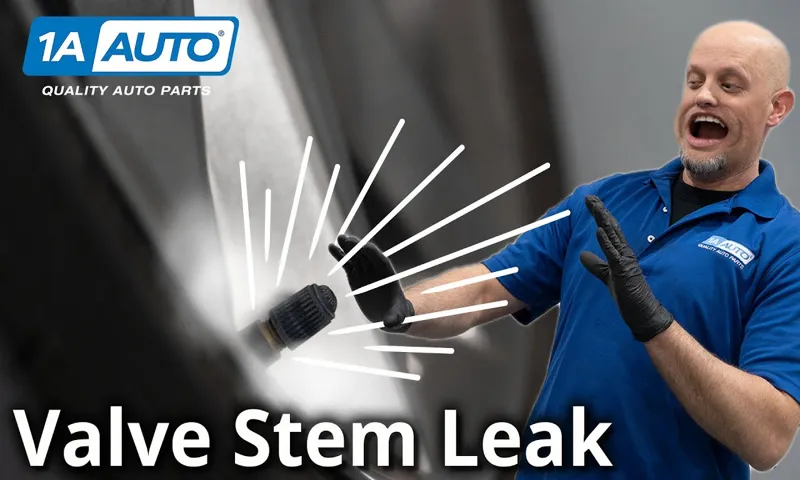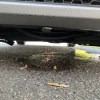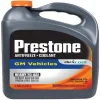Have you ever jumped in your car and felt a strange vibration or noticed your steering was off? It’s possible that you might have a leaking tire. Checking your tires for leaks might seem like a hassle, but it’s essential to ensure your safety while driving. Not only can a tire leak lead to a flat, but it can also affect your vehicle’s handling and lead to accidents.
It’s critical to stay on top of your tire’s health and keep them properly inflated and maintained. Think of your tires as your car’s shoes – they need to be in good condition to keep you moving forward. In this blog post, we’ll explore how to check for leaking tires, what causes leaks, and how to prevent them.
With a little bit of effort, you can ensure your tires stay roadworthy and ready to take on whatever adventure comes your way.
Table of Contents
Visual Inspection
One way to check if your tire is leaking is by performing a visual inspection. Start by looking at the tire’s surface and see if there are any visible punctures, cracks, or bulges. These are clear signs that your tire needs to be repaired or replaced.
Next, use the soapy water technique to identify leaks. Apply a mixture of soap and water to the tire and watch for bubbles forming at the surface. If bubbles appear, then you have a leak, and it’s time to take your tire to a professional mechanic.
Remember that regular maintenance and inspections are crucial to catch tire leaks early before they lead to more serious problems such as a blowout. By keeping an eye on your tire’s condition regularly, you can ensure your safety and prolong the life of your tires. So, don’t neglect this important aspect of car maintenance, and make sure to take care of your tires.
Look for any visible punctures, cuts, or bulges on the tire.
As a driver, it is essential to conduct a visual inspection of your tires regularly to ensure that they are in optimal condition. The first thing that you should check for visible punctures, cuts, or bulges on the tire’s surface. These can be caused by sharp objects on the road or even overloading the vehicle.
Even a small cut or puncture can weaken the tire’s structural integrity and lead to a blowout while driving. Bulges also indicate that the tire is damaged and can explode at any moment, posing a significant risk to the driver and passengers. So, before you embark on your journey, take a minute to visually inspect your tires for any visible signs of damage.
Doing so can save you money, time, and even your life. Remember, prevention is always better than cure, especially when it comes to tire safety.

Check for any excessive wear or damage to the valve stem.
When it comes to ensuring the health and longevity of your vehicle, performing regular visual inspections of its components is essential. One of the most important areas to check is the valve stem. This is the small, protruding piece that allows air to enter and exit your tire and should be inspected regularly for any signs of wear or damage.
Excessive wear or damage may be caused by a variety of factors, including harsh road conditions, improper inflation, or consistent overloading. Checking the valve stem requires only a simple visual inspection. Ensure that the stem is not bent or leaking air, and take note of any cracks or deformation that may be present.
If any issues are identified, it’s important to have them addressed promptly to prevent further damage and ensure the safety of your vehicle and its passengers. By incorporating regular visual inspections into your maintenance routine, you can help keep your vehicle running smoothly and avoid costly repairs in the future.
Tire Pressure Check
If you want to be safe on the road and save money on gas, it’s important to check your tire pressure regularly. One common issue with tires is a leak, which can cause your tires to lose pressure and increase wear and tear. But don’t worry, checking for a leak is easy! First, use a tire pressure gauge to measure the pressure in each tire.
Then, use a soapy water solution to check for any bubbles around the valve stem and the tire tread. If you see bubbles, it’s a sign of a leak and you should get it fixed as soon as possible. Remember, checking your tire pressure regularly is crucial for maintaining your vehicle’s safety and efficiency.
Use a tire pressure gauge to check for any deviations from the manufacturer’s recommended pressure.
Tire pressure is an essential factor in ensuring your car runs smoothly and efficiently. Therefore, it’s essential to check your tires’ pressure regularly using a tire pressure gauge. To check for any deviations from the manufacturer’s recommended pressure, you first need to know what pressure your tires require.
This information can be found in your car manual and on the inside of your car door. Once you have this information, you can use a tire pressure gauge to check the pressure and ensure it matches the recommended amount. It’s crucial to check tire pressure regularly because low pressure can affect your car’s handling, acceleration, and fuel efficiency.
Overinflated tires can also have negative effects, such as a harsher ride and the possibility of the tire bursting. By checking your tire pressure regularly, you can avoid these issues and prolong the life of your tires. In conclusion, checking tire pressure is a quick and easy maintenance task that can make a significant difference in your car’s performance.
Use a tire pressure gauge to check for any deviations from the manufacturer’s recommended pressure and adjust as necessary. Taking care of your tires will not only improve your driving experience but also save you money in the long run.
Inflate the tire to the correct pressure and check for any leaks.
Tire pressure check Regularly checking your tire pressure is an important part of maintaining your vehicle’s safety and performance. Keeping your tires at the correct pressure can improve fuel efficiency, increase tire lifespan, and help prevent blowouts. To check your tire pressure, start by consulting your owner’s manual or the sticker inside the driver’s door that indicates the recommended pressure for your tires.
You can use a tire pressure gauge to measure the pressure of each tire, and inflate the tire with an air compressor if necessary. It’s essential to check your tire pressure when the tires are cold, as driving can heat up the tires and give an inaccurate reading. Additionally, while inspecting the tire pressure, take the time to check for any signs of leaks or punctures.
Even small holes or cuts that are allowing air to escape can lead to a significant decrease in tire pressure over time. Inflate the tire to the correct pressure and check for leaks, and you’ll be sure that your vehicle is running smoothly and safely.
Soapy Water Test
If you suspect that your tire might be leaking, there’s an easy way to check it at home – the soapy water test. All you need is a bucket of water and some dish soap. Mix the soap with water until it’s soapy, then apply it to the tire with a brush or sponge.
Start at the valve stem and work your way around the tire, looking for any spots where bubbles form. If bubbles appear, it’s a sign that air is escaping from your tire and you likely have a slow leak. It’s a simple test that can be done in a few minutes, and it can save you money and hassle in the long run by catching a potential issue before it becomes a major problem.
So the next time you suspect your tire might be leaking, give the soapy water test a try!
Mix water with a small amount of dish soap and apply to the tire’s valve stem and any visible imperfections.
If you suspect that your tire has a leak, the first thing you should do is perform a soapy water test. It’s an effective way to detect small punctures or damage that may not be visible to the naked eye. To conduct the test, mix water with a small amount of dish soap and apply the solution to the tire’s valve stem and any visible imperfections.
If there’s a leak, bubbles will form in the soapy water where the air is escaping. It’s that simple! This technique is particularly useful for identifying leaks in tubeless tires that have been punctured by a small nail or other sharp object. The soapy water test is a quick and easy way to ensure that your tires are in good condition and help prevent any unwanted accidents on the road.
So, next time you suspect a leak in your tire, remember to grab some soapy water and conduct a test. Your safety is worth the effort!
Look for any bubbles that form, indicating a leak.
One way to test for leaks in your plumbing system is to use the soapy water test. This method involves creating a solution of water and dish soap, applying it to areas where a leak is suspected, and looking for any bubbles that form. The idea behind this test is that the soap will create bubbles when it encounters air escaping from a leak.
It’s a simple and effective way to spot any problem areas, especially if you don’t have access to more specialized equipment. Just make sure to cover all the areas thoroughly and watch closely for any sign of bubbles. If you do spot a leak, it’s best to call a professional plumber to fix the issue before it becomes a major problem.
With the soapy water test, you can catch any issues early and prevent more extensive damage down the line, saving you time, money, and a lot of headaches.
Professional Inspection
Have you been noticing that your car’s tire loses air more frequently than expected? It could be due to a leak. Checking the tire’s air pressure with a pressure gauge is the first step to determine if it is leaking. If the tire pressure is low, then inspect the tire for any visible damage, such as a puncture or cut.
Additionally, you can run your hand along the surface of the tire to feel for any punctures or bulging spots, indicating an internal damage. However, for a professional inspection, it is recommended to take it to a mechanic or a tire specialist. They can perform a closer inspection of the tire, including checking the valve stem and rim for any potential leaks.
A professional can also verify if the tire can be repaired or needs replacement. Remember, maintaining your tires is crucial for safe driving, and taking immediate action to repair or replace a leaking tire can help avoid unexpected danger on the road.
If unsure or unable to diagnose a potential leak, take the tire to a professional for inspection.
If you suspect that your tire is leaking, it’s essential to get it inspected by a professional as soon as possible. Not only can a leaking tire lead to a blowout or an accident, but it can also cause damage to your vehicle and lower its fuel efficiency. While there are many DIY methods for diagnosing a tire leak, it’s not always easy to pinpoint the exact cause of the problem.
For instance, a leaking tire valve stem can look identical to a punctured tire, but the repair process is entirely different. That’s where a professional comes in handy. They have the experience, knowledge, and tools needed to diagnose and repair the problem correctly.
Moreover, they can advise you on the best course of action, whether it’s a simple repair or a complete replacement. So, if you’re unsure or unable to diagnose a potential tire leak, it’s always best to take it to a professional for inspection. Don’t put your safety or your vehicle at risk and get your tire checked out today.
Conclusion
In conclusion, just like love, tire maintenance is all about staying vigilant. So, if you want to make sure your rubber always has the right amount of air, give your tires a little squeeze every now and then. And if you suspect a leak, remember this handy rule of thumb: if it’s softer than Drake’s lyrics, it’s time to get that baby patched up.
“
FAQs
What are the common signs of a leaking tire?
Some common signs of a leaking tire include reduced air pressure, difficulty steering, unusual vibrations, and a bulging or cracking tire surface.
How can I visually check my tire for leaks?
You can visually check for leaks by looking for punctures, cracks, or cuts on the tire surface. You can also look for tread wear or uneven wear that may indicate a leak.
What should I do if I suspect my tire is leaking?
If you suspect your tire is leaking, you should immediately stop driving and check the air pressure. If the pressure is significantly low, you should fill the tire with air and take it to a professional for inspection.
Can I repair a leaking tire myself?
It is not recommended to repair a leaking tire yourself unless you have the proper training and equipment. Improperly repaired tires can be dangerous and potentially cause accidents.
How do professionals check for tire leaks?
Professionals typically use a variety of techniques to check for tire leaks, such as submerging the tire in water to look for bubbles or using a tire pressure monitoring system to diagnose leaks.
What are some common causes of tire leaks?
Some common causes of tire leaks include punctures from sharp objects like nails or screws, cracked or worn tire surfaces, valve stem damage, and faulty tire seals.
How can I prevent tire leaks in the future?
To prevent tire leaks, regularly inspect your tires for damage or signs of wear, avoid driving over sharp objects, maintain proper air pressure, and have your tires professionally inspected and rotated on a regular basis.



